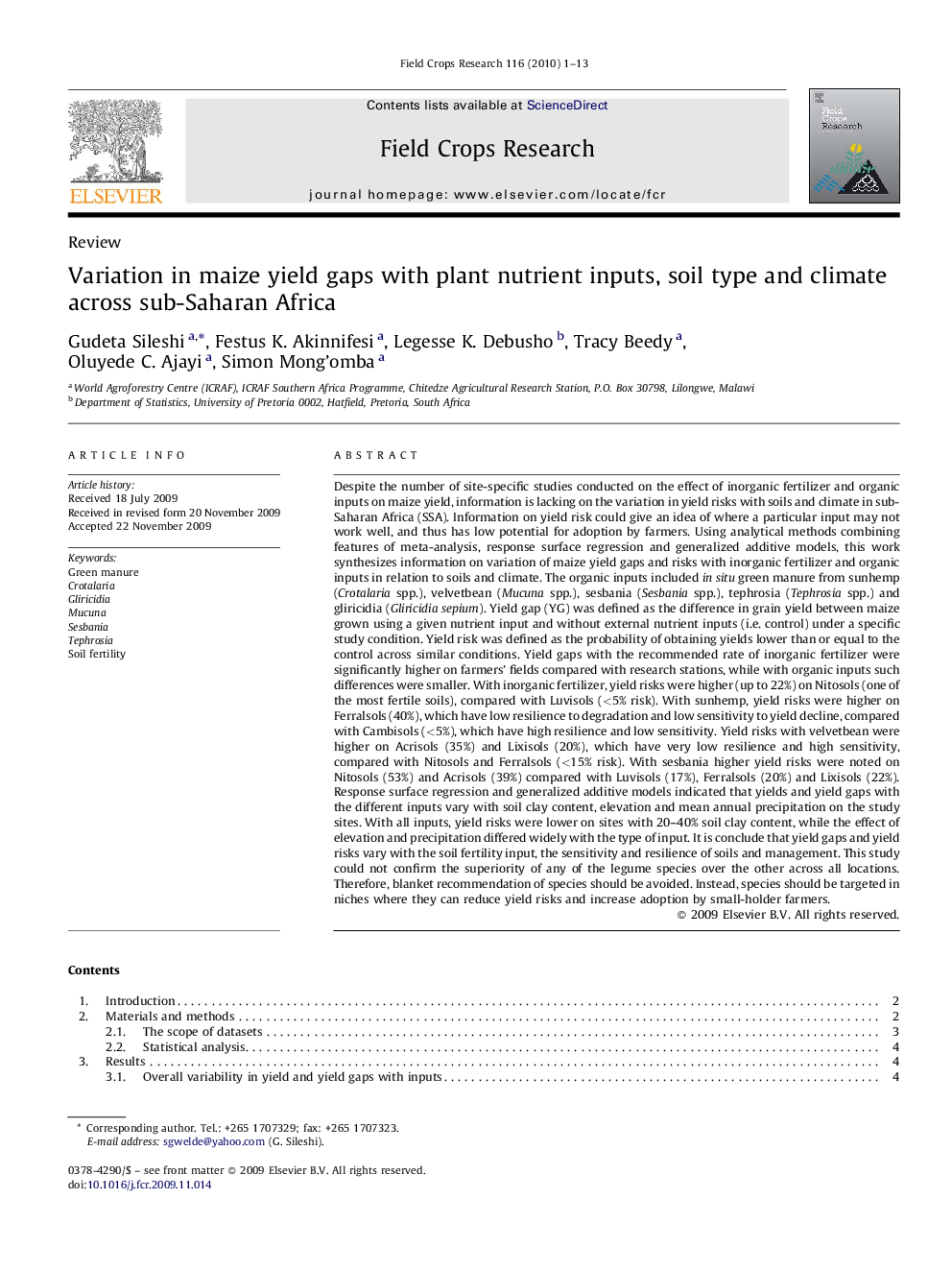| کد مقاله | کد نشریه | سال انتشار | مقاله انگلیسی | نسخه تمام متن |
|---|---|---|---|---|
| 4511194 | 1624742 | 2010 | 13 صفحه PDF | دانلود رایگان |

Despite the number of site-specific studies conducted on the effect of inorganic fertilizer and organic inputs on maize yield, information is lacking on the variation in yield risks with soils and climate in sub-Saharan Africa (SSA). Information on yield risk could give an idea of where a particular input may not work well, and thus has low potential for adoption by farmers. Using analytical methods combining features of meta-analysis, response surface regression and generalized additive models, this work synthesizes information on variation of maize yield gaps and risks with inorganic fertilizer and organic inputs in relation to soils and climate. The organic inputs included in situ green manure from sunhemp (Crotalaria spp.), velvetbean (Mucuna spp.), sesbania (Sesbania spp.), tephrosia (Tephrosia spp.) and gliricidia (Gliricidia sepium). Yield gap (YG) was defined as the difference in grain yield between maize grown using a given nutrient input and without external nutrient inputs (i.e. control) under a specific study condition. Yield risk was defined as the probability of obtaining yields lower than or equal to the control across similar conditions. Yield gaps with the recommended rate of inorganic fertilizer were significantly higher on farmers’ fields compared with research stations, while with organic inputs such differences were smaller. With inorganic fertilizer, yield risks were higher (up to 22%) on Nitosols (one of the most fertile soils), compared with Luvisols (<5% risk). With sunhemp, yield risks were higher on Ferralsols (40%), which have low resilience to degradation and low sensitivity to yield decline, compared with Cambisols (<5%), which have high resilience and low sensitivity. Yield risks with velvetbean were higher on Acrisols (35%) and Lixisols (20%), which have very low resilience and high sensitivity, compared with Nitosols and Ferralsols (<15% risk). With sesbania higher yield risks were noted on Nitosols (53%) and Acrisols (39%) compared with Luvisols (17%), Ferralsols (20%) and Lixisols (22%). Response surface regression and generalized additive models indicated that yields and yield gaps with the different inputs vary with soil clay content, elevation and mean annual precipitation on the study sites. With all inputs, yield risks were lower on sites with 20–40% soil clay content, while the effect of elevation and precipitation differed widely with the type of input. It is conclude that yield gaps and yield risks vary with the soil fertility input, the sensitivity and resilience of soils and management. This study could not confirm the superiority of any of the legume species over the other across all locations. Therefore, blanket recommendation of species should be avoided. Instead, species should be targeted in niches where they can reduce yield risks and increase adoption by small-holder farmers.
Journal: Field Crops Research - Volume 116, Issues 1–2, 3 March 2010, Pages 1–13